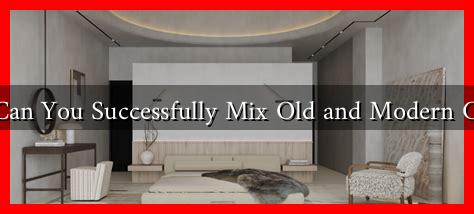-
Table of Contents
- How Can You Successfully Mix Old and Modern Colors?
- The Importance of Color in Design
- Understanding Color Theory
- Strategies for Mixing Old and Modern Colors
- 1. Choose a Dominant Color
- 2. Use Neutrals as a Bridge
- 3. Incorporate Textures and Patterns
- 4. Limit Your Palette
- Case Studies: Successful Blends of Old and Modern Colors
- Conclusion
How Can You Successfully Mix Old and Modern Colors?
Color is a powerful tool in design, influencing mood, perception, and even behavior. When it comes to mixing old and modern colors, the challenge lies in creating a harmonious balance that respects the essence of both styles. This article explores effective strategies for blending traditional and contemporary color palettes, providing insights, examples, and practical tips to achieve a cohesive look.
The Importance of Color in Design
Color plays a crucial role in design, whether in interior spaces, fashion, or graphic design. It can evoke emotions, create focal points, and even define cultural identities. According to a study by the Institute for Color Research, people make a subconscious judgment about a person, environment, or product within 90 seconds of initial viewing, and between 62% to 90% of that assessment is based on color alone. Therefore, understanding how to mix old and modern colors effectively can significantly impact the success of your design.
Understanding Color Theory
Before diving into mixing colors, it’s essential to grasp the basics of color theory. The color wheel, developed by Isaac Newton, categorizes colors into primary, secondary, and tertiary groups. Here are some key concepts:
- Complementary Colors: Colors opposite each other on the color wheel (e.g., blue and orange) create vibrant contrasts.
- Analogous Colors: Colors next to each other (e.g., blue, blue-green, and green) provide a harmonious look.
- Monochromatic Colors: Variations of a single hue can create a sophisticated and cohesive palette.
Strategies for Mixing Old and Modern Colors
Successfully blending old and modern colors requires a thoughtful approach. Here are some strategies to consider:
1. Choose a Dominant Color
Select a dominant color that will serve as the foundation for your palette. This color can be a modern shade that resonates with current trends or a classic hue that reflects traditional aesthetics. For example, a deep navy blue can serve as a modern base while allowing for the inclusion of vintage-inspired colors like mustard yellow or olive green.
2. Use Neutrals as a Bridge
Neutrals can effectively bridge the gap between old and modern colors. Shades like beige, gray, and white can soften the transition and provide a backdrop that allows both styles to shine. For instance, pairing a modern charcoal gray with antique cream can create a sophisticated and timeless look.
3. Incorporate Textures and Patterns
Textures and patterns can enhance the visual interest of your color palette. Mixing modern geometric patterns with traditional floral designs can create a dynamic contrast. For example, a contemporary rug with bold lines can complement vintage furniture upholstered in a classic damask pattern.
4. Limit Your Palette
To avoid overwhelming the space, limit your color palette to three or four main colors. This approach allows for a more cohesive look while still enabling the inclusion of both old and modern elements. A popular combination might include a modern teal, a vintage coral, a neutral gray, and a touch of gold for accents.
Case Studies: Successful Blends of Old and Modern Colors
Several designers and brands have successfully mixed old and modern colors, showcasing the potential of this approach:
- Restoration Hardware: This brand often combines modern grays and whites with vintage-inspired furniture, creating a timeless yet contemporary aesthetic.
- Farrow & Ball: Known for its rich, historical colors, this paint company offers modern interpretations of classic shades, allowing homeowners to blend styles effortlessly.
- Studio McGee: This design firm frequently uses a mix of modern neutrals and vintage-inspired colors to create inviting and stylish spaces.
Conclusion
Mixing old and modern colors can create a unique and visually appealing design that honors both tradition and contemporary trends. By understanding color theory, choosing a dominant color, using neutrals as a bridge, incorporating textures, and limiting your palette, you can achieve a harmonious blend. As demonstrated by successful case studies, the right combination can lead to stunning results that resonate with both past and present aesthetics. Embrace the challenge of mixing colors, and let your creativity shine!
For more insights on color theory and design, consider visiting The Color Association of the United States.

